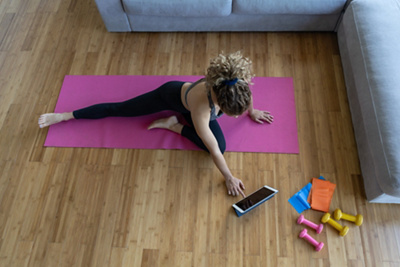The postnatal training programme supports you in strengthening the abdominal and pelvic floor muscles and helps to relax the strained shoulder and back muscles. The postnatal and recovery training programme helps you to prevent possible late damage (e.g. organ prolapse or incontinence).
Important
Please note that the programme is structured in stages. It is therefore important to allow sufficient time for each stage in order to avoid overexertion and possible consequential damage. Start with stage 1 and complete it in full before moving on to stage 2 or stage 3.
Before you can exercise regularly again, your body needs to learn how to activate its stabilising muscles properly. Each stage of the postnatal exercise programme has a specific purpose and builds on previous steps.
- Stage 1: Early stage with emphasis on perception, breathing and mobilisation
- Stage 2: Muscle development with focus on stability
- Stage 3: Strength build-up
We recommend that you take at least four weeks per phase so that your body can build up the necessary strength before you start the next stage. Of course, you can also take longer for each stage.
Take 20-30 minutes twice a week to perform the exercises in your current stage. Try to perform the exercises one after the other and in full. The number of repetitions is a recommendation. It is not the number of exercises that will lead you to success, but the regularity of your training and the quality of your execution. Always remember: quality before quantity. If you realise that you can no longer perform an exercise correctly, take a break or reduce the number of repetitions.
The recovery programme is aimed at women around 6 to 8 weeks after giving birth (approx. 8 to 12 weeks after a caesarean section). As a general rule, however, it is never too late to start a postnatal programme. Postnatal recovery is not a fitness or sports programme, but an ongoing process.
Tip: To become aware of your abdominal muscles and pelvic floor:
- pull in your lower abdomen every now and then when you go for a walk. Make sure you continue breathing normally.
- draw your sitting bones together without activating your gluteal muscles while sitting, lying down or standing.

